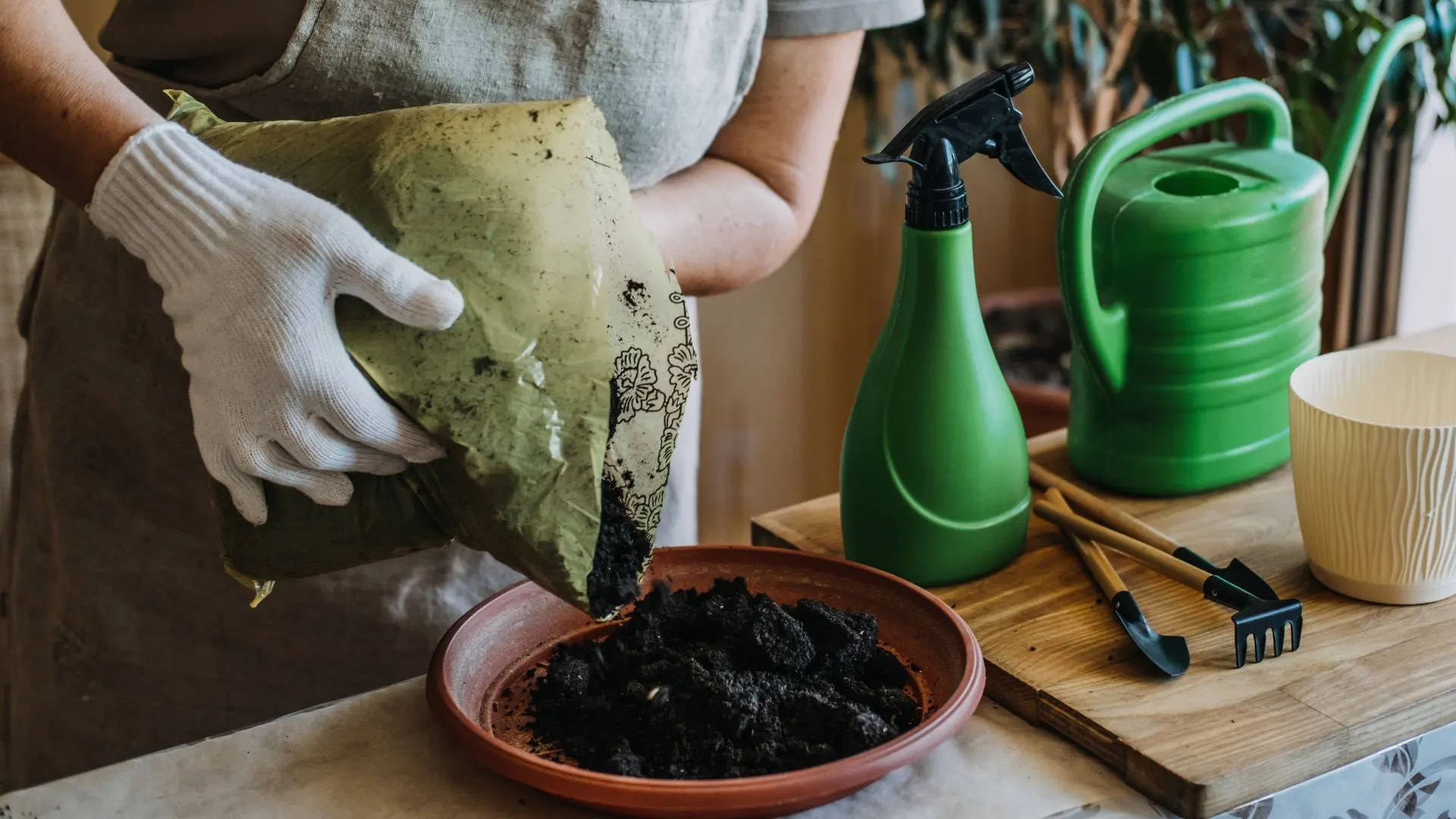Although repotting might seem like an easy task, it’s important to be aware of potential mistakes that could put your green friends at risk!
Leaving your plants potted for too long, using the wrong container, and not changing the soil are just a few of the repotting mistakes that jeopardize the well-being of your beloved plants.
In this article, we are going to talk about the most common repotting mistakes and also provide the best tips on how to avoid them!
Avoid These Mistakes
The first mistake would be leaving your plant in one pot where it becomes rootbound, and then not breaking up the root ball when repotting. Rootbound plants are self-contained and can’t grow into new soil properly.
The next thing you should pay attention to is timing – repotting during a plant’s dormant phase or when it’s actively flowering can be harmful. Using a pot that is too large or too small for the plant can lead to issues with water retention and root health.
Failing to water the plant appropriately after repotting can lead to stress and dehydration, and applying fertilizer immediately after repotting can burn the plant’s roots.
Tall or top-heavy plants may need support to prevent them from toppling over. Additionally, sudden changes in light or temperature can cause transplant shock.
If you own a Monstera, here’s a detailed step-by-step guide to repotting Monstera plants.
Tips For Repotting Rootbound Plants
Before you get your hands dirty, it’s important to water the plant so that it is easier to work with those tricky roots. Squeeze the pot gently to remove the root ball from the sides then gently pull out the plant.
You can cut off the ends of the roots if they have grown through the pot’s drainage openings. Plastic pots can be cut open to release the plant without damaging its roots.
Start loosening the root ball once you’ve successfully taken the plant out of its current pot. Don’t rush it if your plant is firmly root-bound and remember to be patient!
Rub the root ball gently until it begins to separate from itself – don’t pull on the roots. The goal is to keep as much of the root system intact as possible, although some damage is fine as long as it doesn’t interfere with the plant’s ability to take in nutrients and water.
Once you’ve loosened up the rootball, proceed with repotting as usual.
You might also be interested in: Beginner Friendly Step-by-step Guide To Repotting Bonsai
Why Is Loosening Rootbound Roots Important?
If you were wondering why it is important to loosen up the roots, it’s because they are no longer able to expand outward, even though they have plenty of room in their new pot!
As expert gardener Reagen Kastner explains: “The roots are trapped within themselves, they can’t penetrate their own coil.”, indicating that the plant’s growth is limited since they are wrapped and continue growing inwards.
So, if they can’t spread out evenly, the roots can’t provide the required support, nor can they absorb water and nutrients properly. Stunted growth and curly leaves are often signs that your plant is rootbound.
In case you don’t fix this issue, your plant will completely stop growing and eventually die off.
Also read: Helpful Tips To Transplant Lavender + 4 Things To Avoid



